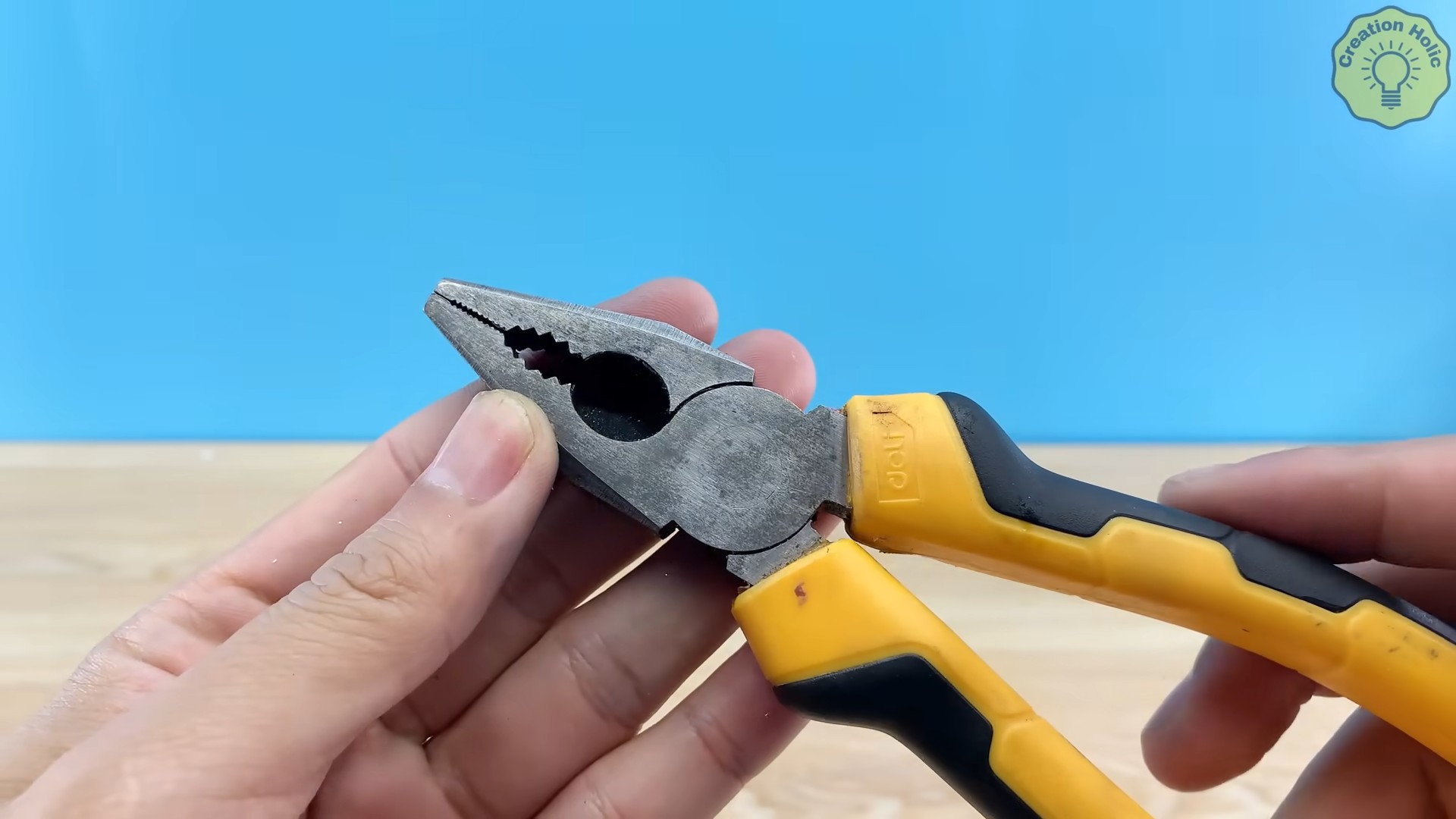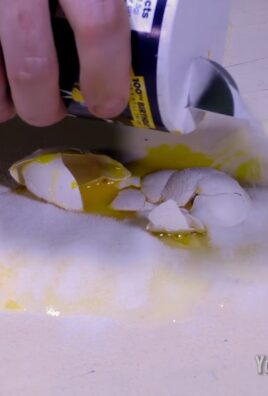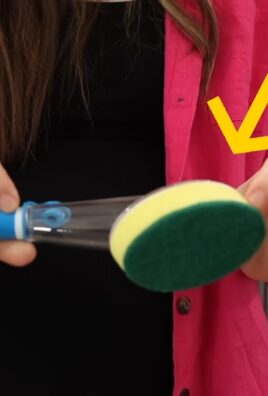Life hacks for everyday – who doesn’t love them? I know I do! We’re all searching for ways to simplify our routines, save time, and make life a little easier, right? This article is your ultimate guide to unlocking a treasure trove of clever DIY solutions that will transform your daily grind into a breeze. Forget complicated instructions and expensive gadgets; we’re diving into simple, effective tricks that anyone can master.
Throughout history, resourcefulness has been a virtue. From ancient civilizations devising ingenious irrigation systems to our grandparents repurposing household items, the spirit of “making do” has always been a part of the human experience. These aren’t just random tips; they’re a continuation of that legacy, adapted for the modern world.
Let’s face it, modern life can be overwhelming. We’re constantly bombarded with information and demands on our time. That’s why these life hacks for everyday are so essential. They offer practical solutions to common problems, freeing up your time and energy for the things that truly matter. Whether you’re looking to organize your home, streamline your morning routine, or boost your productivity, these DIY tricks will empower you to take control and create a more efficient and enjoyable life. Get ready to discover some game-changing tips that will have you saying, “Why didn’t I think of that?!”

DIY Life Hacks to Simplify Your Day
Okay, let’s dive into some awesome DIY life hacks that I’ve personally found incredibly useful. These are designed to make your everyday life a little bit easier, a little bit more organized, and a whole lot more efficient. Get ready to unleash your inner MacGyver!
Section 1: Reviving Dried-Out Mascara
Is your favorite mascara clumpy and dry? Don’t toss it just yet! This hack will breathe new life into it.
What You’ll Need:
* A few drops of saline solution (the kind you use for contact lenses)
* Mascara wand
* Paper towel
Step-by-Step Instructions:
1. Gather Your Supplies: Make sure you have your dried-out mascara, saline solution, and a clean paper towel ready to go. Having everything within reach makes the process smoother.
2. Add Saline Solution: Carefully add 2-3 drops of saline solution into the mascara tube. Be careful not to add too much at once, as this can make the mascara too watery. It’s always better to start with less and add more if needed.
3. Mix Thoroughly: Use the mascara wand to gently swirl the saline solution into the mascara. Avoid pumping the wand in and out, as this can introduce air and dry out the mascara even faster in the long run. Instead, use a circular motion to mix everything together.
4. Check the Consistency: After mixing, check the consistency of the mascara. If it’s still too thick, add another drop of saline solution and mix again. Repeat this process until you achieve a smooth, creamy consistency.
5. Wipe the Wand: Once you’re happy with the consistency, wipe off any excess mascara from the wand with a clean paper towel. This will prevent clumping when you apply the mascara.
6. Test and Enjoy: Now, test the mascara on your lashes. You should notice a significant improvement in its application. Your mascara should now be smooth, clump-free, and ready to give you those luscious lashes you love!
Section 2: Making a Phone Stand from Sunglasses
Need a quick phone stand but don’t have one handy? Your sunglasses can come to the rescue!
What You’ll Need:
* A pair of sunglasses
Step-by-Step Instructions:
1. Open the Sunglasses: Simply open your sunglasses as you normally would.
2. Invert and Position: Place the sunglasses upside down on a flat surface, with the nose piece facing upwards. The arms of the sunglasses should be extended outwards, forming a V-shape.
3. Rest Your Phone: Carefully rest your phone against the nose piece of the sunglasses. The arms of the sunglasses will act as supports, holding your phone in place. Adjust the angle by slightly adjusting the position of the phone.
4. Enjoy Hands-Free Viewing: Now you can enjoy hands-free viewing of videos, video calls, or anything else you need to see on your phone. This hack is perfect for when you’re cooking, working, or just want to relax and watch something without holding your phone.
Section 3: Removing Stripped Screws
Stripped screws are the bane of every DIYer’s existence. But don’t worry, I’ve got a trick for you!
What You’ll Need:
* A wide rubber band (like the kind used for produce)
* Screwdriver
Step-by-Step Instructions:
1. Place the Rubber Band: Place the wide rubber band over the head of the stripped screw. Make sure the rubber band covers the entire screw head and fills the stripped grooves.
2. Insert the Screwdriver: Insert the screwdriver into the screw head, pressing down firmly. The rubber band will provide extra grip and help the screwdriver catch onto the remaining grooves in the screw.
3. Apply Pressure and Turn: Apply firm, steady pressure to the screwdriver while turning it slowly. The rubber band should help the screwdriver grip the screw and allow you to unscrew it.
4. Repeat if Necessary: If the screw still won’t budge, try using a thicker rubber band or applying more pressure. You can also try using a different screwdriver with a slightly larger head.
5. Celebrate Success: Once you’ve successfully removed the stripped screw, give yourself a pat on the back! You’ve conquered one of the most frustrating DIY challenges.
Section 4: Organizing Cords with Toilet Paper Rolls
Tired of tangled cords? This simple hack will keep them organized and easily accessible.
What You’ll Need:
* Empty toilet paper rolls
* Markers or labels (optional)
* A box or drawer
Step-by-Step Instructions:
1. Gather Your Rolls: Collect the empty toilet paper rolls you need. You can decorate them with markers or labels to identify the cords inside, but this is optional.
2. Fold in the Ends: Fold in the ends of each toilet paper roll to create a closed tube. This will prevent the cords from slipping out. You can fold them inwards or outwards, depending on your preference.
3. Insert the Cords: Coil each cord neatly and insert it into a toilet paper roll. Make sure the cord is not too tightly coiled, as this can damage it.
4. Label (Optional): If you decorated the rolls, make sure the labels are visible. This will help you quickly identify the cord you need.
5. Store in a Box or Drawer: Place the toilet paper rolls containing the cords in a box or drawer. This will keep them organized and prevent them from getting tangled.
6. Enjoy Organized Cords: Now you can easily find the cord you need without having to untangle a mess of wires. This hack is perfect for organizing cords for electronics, appliances, and other devices.
Section 5: Cleaning a Microwave with Lemon
Microwaves can get pretty gross, but this natural cleaning method is quick, easy, and smells great!
What You’ll Need:
* 1 lemon
* Microwave-safe bowl
* Water
Step-by-Step Instructions:
1. Prepare the Lemon: Cut the lemon in half. Squeeze the juice from both halves into the microwave-safe bowl.
2. Add Water: Add about a cup of water to the bowl with the lemon juice.
3. Place Lemon Halves in the Bowl: Place the squeezed lemon halves into the bowl as well. They will help to release even more cleaning power.
4. Microwave the Mixture: Microwave the bowl with the lemon juice and water on high for 3-5 minutes, or until the mixture is boiling and the microwave is filled with steam.
5. Let it Stand: After microwaving, let the bowl stand inside the microwave for another 5-10 minutes. This will allow the steam to loosen any stuck-on food particles.
6. Wipe Clean: Carefully remove the bowl from the microwave (it will be hot!). Use a clean cloth or sponge to wipe down the inside of the microwave. The loosened food particles should come off easily.
7. Enjoy a Clean Microwave: Your microwave should now be clean, fresh-smelling, and ready to use. This hack is a natural and effective way to keep your microwave clean without using harsh chemicals.
Section 6: Polishing Shoes with Banana Peel
Yes, you read that right! Banana peels can actually polish your leather shoes.
What You’ll Need:
* A banana peel
* A soft cloth
Step-by-Step Instructions:
1. Prepare the Banana Peel: Peel a ripe banana and save the peel. The inside of the peel is what you’ll be using to polish your shoes.
2. Rub the Peel on Your Shoes: Rub the inside of the banana peel all over your leather shoes. Make sure to cover the entire surface of the shoes. The natural oils in the banana peel will help to polish and condition the leather.
3. Let it Sit: Let the banana residue sit on your shoes for a few minutes. This will allow the oils to penetrate the leather.
4. Buff with a Soft Cloth: Use a soft cloth to buff your shoes. Rub the cloth in a circular motion to remove the banana residue and polish the leather.
5. Enjoy Shiny Shoes: Your shoes should now be shiny and polished. This hack is a natural and eco-friendly way to keep your leather shoes looking their best.
Section 7: Unclogging a Drain with Baking Soda and Vinegar
A clogged drain is a common household problem, but you don’t always need harsh chemicals to fix it. This natural solution works wonders!
What You’ll Need:
* 1 cup baking soda
* 1 cup vinegar
* Hot water
Step-by-Step Instructions:
1. Pour

Conclusion
So, there you have it! This simple yet incredibly effective DIY trick is more than just a life hack; it’s a game-changer for anyone looking to simplify their daily routine and save money. We’ve explored how to create a versatile and eco-friendly cleaning solution using readily available ingredients, transforming the way you approach household chores. The beauty of this method lies not only in its cost-effectiveness but also in its adaptability. You’re not just following a recipe; you’re embarking on a journey of customization and discovery.
Why is this DIY trick a must-try? Because it empowers you to take control of the products you use in your home. You know exactly what’s going into your cleaning solution, eliminating harsh chemicals and reducing your environmental footprint. It’s a healthier, safer, and more sustainable alternative to commercially produced cleaners. Plus, the satisfaction of creating something useful with your own hands is an added bonus!
But the possibilities don’t stop there. Feel free to experiment with different essential oils to create your signature scent. Lavender for relaxation, lemon for a burst of freshness, or tea tree for its antibacterial properties – the choice is yours! You can also adjust the concentration of ingredients to suit your specific cleaning needs. For tougher stains, add a bit more vinegar or baking soda. For delicate surfaces, dilute the solution further.
Consider these variations to further enhance your DIY experience:
* **Infused Vinegar:** Infuse your vinegar with citrus peels (lemon, orange, grapefruit) for a few weeks before using it in the solution. This adds a delightful fragrance and boosts its cleaning power.
* **Herbal Boost:** Add dried herbs like rosemary or thyme to your vinegar infusion for their natural antiseptic and antimicrobial properties.
* **DIY Cleaning Wipes:** Soak reusable cloths in your DIY cleaning solution and store them in an airtight container for convenient and eco-friendly cleaning wipes.
* **Furniture Polish:** Mix your solution with a small amount of olive oil for a natural furniture polish that will leave your wood surfaces gleaming.
We are confident that once you try this DIY trick, you’ll wonder how you ever lived without it. It’s a simple, effective, and environmentally friendly way to tackle everyday cleaning tasks. So, ditch the expensive and chemical-laden cleaners and embrace the power of DIY.
We encourage you to try this life hack and share your experience with us! Let us know what variations you’ve tried, what scents you’ve created, and how it’s transformed your cleaning routine. Your feedback is invaluable and helps us all learn and grow together. Share your tips and tricks in the comments below, and let’s create a community of DIY enthusiasts! Embrace the power of simple, sustainable living and discover the joy of creating your own cleaning solutions. This DIY trick is more than just a recipe; it’s a lifestyle choice.
Frequently Asked Questions
Is this DIY cleaning solution safe for all surfaces?
While this DIY cleaning solution is generally safe for most surfaces, it’s always a good idea to test it on an inconspicuous area first, especially on delicate materials like marble, granite, or waxed wood. The acidity of vinegar can potentially damage certain surfaces, so caution is advised. For these surfaces, a diluted solution or a different cleaning method may be more appropriate. Always refer to the manufacturer’s instructions for specific cleaning recommendations for your surfaces.
How long does the DIY cleaning solution last?
This DIY cleaning solution typically lasts for several weeks when stored in an airtight container in a cool, dark place. The vinegar acts as a natural preservative, helping to prevent bacterial growth. However, it’s always best to make a fresh batch every month or so to ensure optimal effectiveness. If you notice any changes in color, odor, or consistency, discard the solution and make a new batch.
Can I use different types of vinegar?
Yes, you can use different types of vinegar, such as white vinegar, apple cider vinegar, or cleaning vinegar. White vinegar is the most commonly used and readily available option, and it’s generally the most effective for cleaning due to its higher acidity. Apple cider vinegar has a milder scent and may be preferred by those who are sensitive to the strong odor of white vinegar. Cleaning vinegar is specifically formulated for cleaning purposes and has an even higher acidity than white vinegar. Choose the type of vinegar that best suits your preferences and cleaning needs.
What essential oils are best to use in this DIY cleaning solution?
The best essential oils to use in this DIY cleaning solution depend on your personal preferences and desired benefits. Some popular choices include:
* **Lemon:** For its fresh, citrusy scent and degreasing properties.
* **Lavender:** For its calming and relaxing aroma.
* **Tea Tree:** For its antibacterial and antifungal properties.
* **Eucalyptus:** For its invigorating scent and antiseptic properties.
* **Peppermint:** For its refreshing scent and ability to repel insects.
Experiment with different essential oils to find your favorite combinations. Remember to use pure, therapeutic-grade essential oils for the best results.
Can I use this DIY cleaning solution to clean my windows and mirrors?
Yes, this DIY cleaning solution is excellent for cleaning windows and mirrors. The vinegar helps to cut through grime and leave a streak-free shine. Simply spray the solution onto the surface and wipe clean with a microfiber cloth. For best results, use a clean, dry cloth to buff the surface after wiping.
Is this DIY cleaning solution safe for pets and children?
This DIY cleaning solution is generally safer for pets and children than commercially produced cleaners, as it doesn’t contain harsh chemicals or synthetic fragrances. However, it’s still important to keep the solution out of reach of children and pets. Vinegar can be irritating if ingested, and some essential oils can be toxic to pets. If you have pets or small children, consider using a diluted solution or choosing essential oils that are known to be safe for them. Always supervise children when they are helping with cleaning tasks.
Can I use this DIY cleaning solution to clean my toilet?
Yes, this DIY cleaning solution can be used to clean your toilet. Pour a cup of the solution into the toilet bowl and let it sit for 15-20 minutes. Then, scrub the bowl with a toilet brush and flush. For tougher stains, you can add a bit of baking soda to the bowl before scrubbing.
How can I make this DIY cleaning solution more effective for disinfecting?
While this DIY cleaning solution has some antibacterial properties, it’s not a substitute for a disinfectant. To make it more effective for disinfecting, you can add a few drops of tea tree essential oil or hydrogen peroxide to the solution. However, be careful when using hydrogen peroxide, as it can bleach some surfaces. Always test it on an inconspicuous area first. For thorough disinfection, especially in areas where germs are a concern, it’s best to use a commercially produced disinfectant.
What if I don’t like the smell of vinegar?
If you don’t like the smell of vinegar, you can try using apple cider vinegar, which has a milder scent. You can also add more essential oils to the solution to mask the vinegar odor. The vinegar smell will typically dissipate quickly after cleaning. Another option is to infuse your vinegar with citrus peels or herbs to create a more pleasant scent.




Leave a Comment